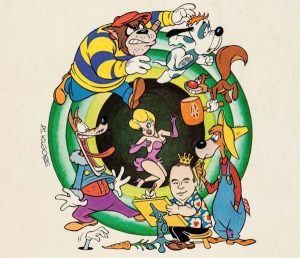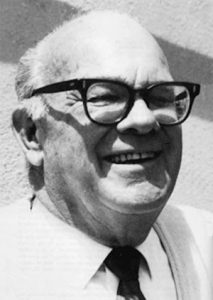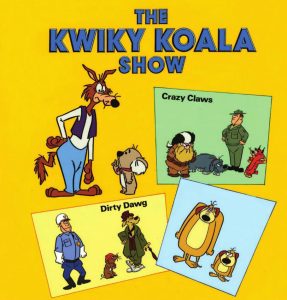The Last Days of Tex Avery


Caricature of Tex by Al Kilgore for the cover of Joe Adamson’s 1975 book, “Tex Avery: King of Cartoons”
After working on commercial advertising and briefly running his own animation studio, Avery retired in 1978. He was tired, in poor health, and haunted by both a divorce and the suicide of his son. By then, the days of animated theatrical shorts were long over, replaced by limited animation TV fare.
However, in 1979, Avery was given an offer by his former MGM stablemates, William Hanna and Joe Barbera. Recalling Avery’s heyday at that studio, they hired Avery to helm a new series of his own creation for the Hanna-Barbera studio with CBS as the broadcaster. Knowledgeable animation fans reacted with excitement, hoping that Avery could rekindle his former brilliance. Avery developed a character named “Quicky Koala”, and hopes ran high.

Tex Avery circa 1974
Tex Avery belonged to a time when the theatrical cartoon still flourished, and the content and sensibilities of those classic, revered shorts were vastly different. Chuck Jones once reminisced that “We made these cartoons for ourselves.” Not so in 1979.
Avery died while Quicky Koala was still in production. He created a cartoon about a Koala, voiced by writer Bob Ogle, who could avoid danger by what appeared to be teleportation; smear animation was never utilized (possibly due to expense). Danger came in the form of Wilford Wolf, voiced by John Stephenson, who seemed to want to capture Ouicky as either a collectible or to keep as a pet. Many of the 16 episodes produced had a very Chuck Jones-style flavor to them. Wilford used various ruses, traps, and machines the Wile E. Coyote might have employed. All of them were futile, since Quicky could instantly disappear and appear again at will.
 Both characters were retreads. Bob Ogle used a voice that was very similar to that of Bill Thompson, the original voice of Droopy in the theatrical shorts. Wilford Wolf strongly resembled Mildew Wolf, a character who appeared in a segment of H-B’s Cattanooga Cats (1969-1971). For Wilford, John Stephenson approximated the voice of Paul Lynde, who had played Mildew.
Both characters were retreads. Bob Ogle used a voice that was very similar to that of Bill Thompson, the original voice of Droopy in the theatrical shorts. Wilford Wolf strongly resembled Mildew Wolf, a character who appeared in a segment of H-B’s Cattanooga Cats (1969-1971). For Wilford, John Stephenson approximated the voice of Paul Lynde, who had played Mildew.
When Quicky Koala premiered on September 12, 1981, Avery was already gone. Hanna and Barbera changed the name of his creation to Kwicky Koala, and the show was henceforth known by that name. Avery was developing a character called Cavemouse (based on Hanna and Barbera’s beloved Jerry Mouse) for The Flintstone Comedy Show when he collapsed in the studio parking lot, ravaged by lung cancer.
Kwicky Koala followed soon afterwards. Kwicky was cancelled on December 26, 1981, after 16 episodes. Although Tex Avery’s legend lives on in the memories of hardcore animation buffs, Kwicky Koala, as one of Avery’s final works, is a footnote in Saturday Morning history.
